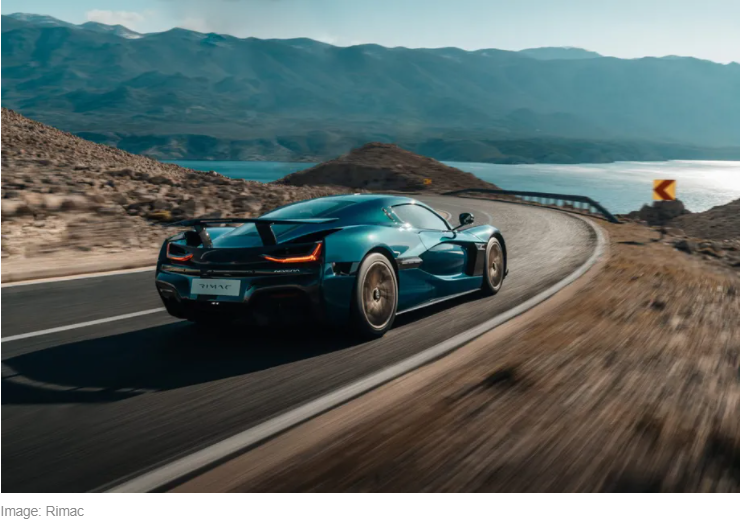The Rimac C_Two concept has evolved into a production-ready electric hypercar called the Nevera, and it’s still just as absurd as it was three years when it first broke cover at the 2018 Geneva Motor Show.
Powered by a 120kWh battery pack, the Nevera uses four electric motors — one for each wheel — to put down an almost unbelievable 1.4MW of power, which Rimac says is roughly equivalent to 1,914 horsepower. The quad-motor setup can push the car to 100 km per hour from a standstill in just 1.85 seconds. It has a top speed of 258 miles per hour.
What’s more, Rimac says one of the things it worked on over the last three years was improving the battery pack’s liquid cooling system, meaning drivers can use that peak power for longer before the batteries start to complain.
To make sure drivers have a fighting chance at controlling that amount of power, Rimac developed a new all-wheel torque vectoring system that basically acts as both an electronic stability and traction control system. The software can make “over 100 calculations per second to tailor the level of torque to achieve the desired driving style,” Rimac says in the press release for the Nevera. Braking in a car like this is also important, and Rimac has designed the Nevera to be able to dynamically adjust the balance of the braking force between the friction brakes in the wheels and the regenerative braking made possible by the electric motors.
If that’s not enough, Rimac has developed an “AI driving coach” feature that leverages the Nevera’s 12 ultrasonic and six radar sensors, as well as 13 cameras to help “optimize and enhance the driver’s on-track performance.” It does this by providing track-specific audio and visual cues for when to brake for, where to turn into, and when to accelerate out of a corner.
Of course, very few people will have to worry about whether they can properly pilot a Nevera. Rimac is only making 150 of them, and they’ll each start around $2.4 million
A big part of that price tag is Nevera’s lavish tech. The monocoque is the largest single carbon fiber piece in the automotive industry, according to the company, dramatically cutting weight and improving safety. The H-shaped battery pack is structurally integrated into that monocoque, too, keeping the center of gravity low and adding to the overall structural stiffness. To keep the ride smooth, the Nevera has a double wishbone suspension that uses electronically controlled dampers, which also makes for easy ride height adjustments.
Inside the cockpit, there are three screens: a driver display, a horizontal touchscreen in the center console, and a passenger display. There’s also an accompanying mobile app, which offers live track data, and the ability to download telemetry so drivers can analyze their performance.

